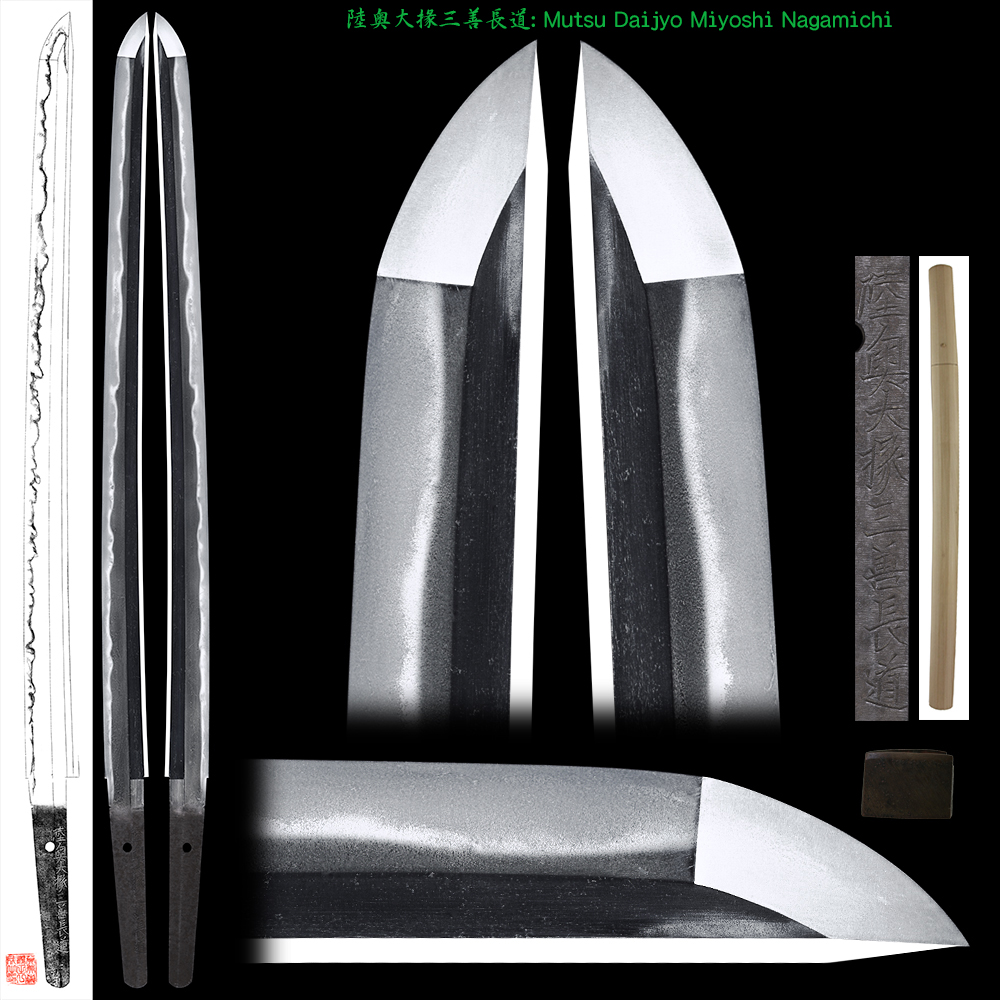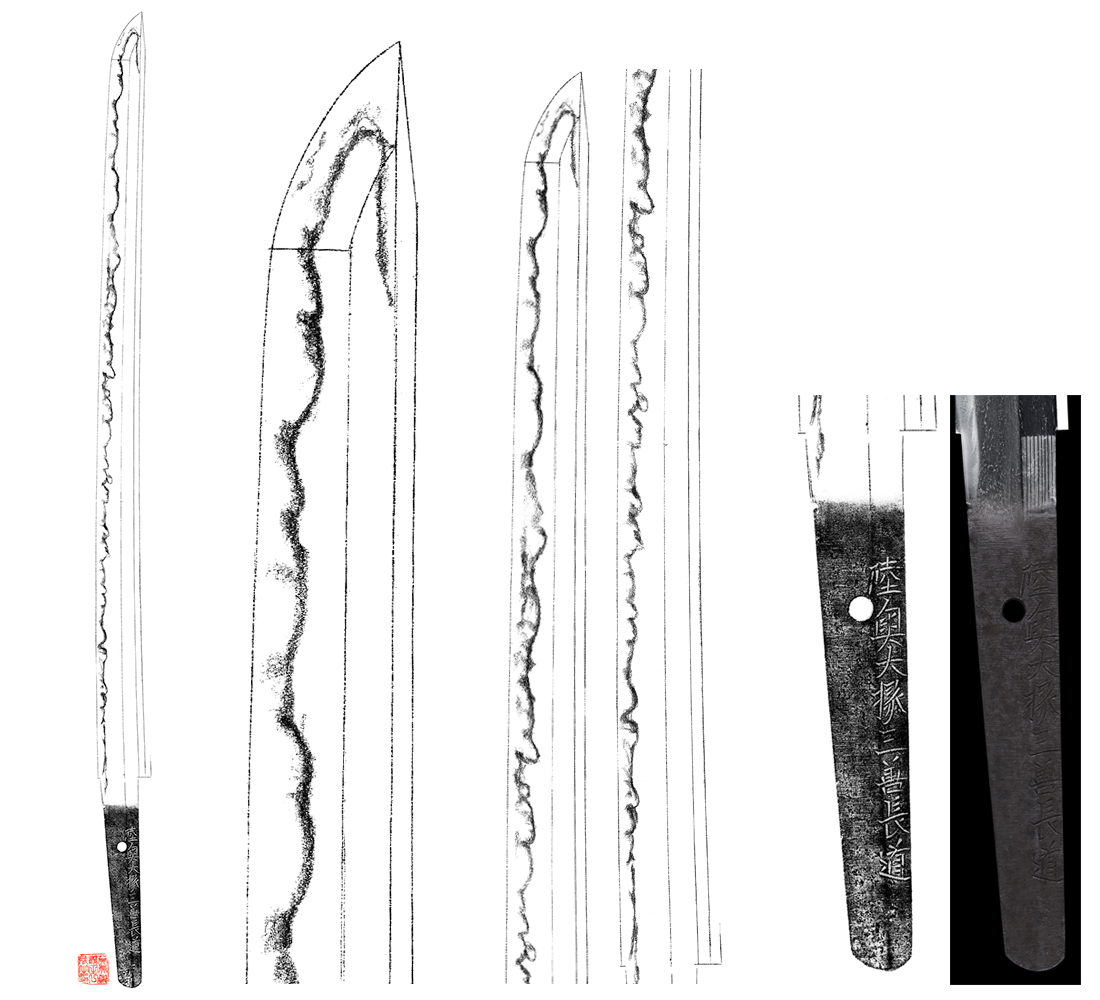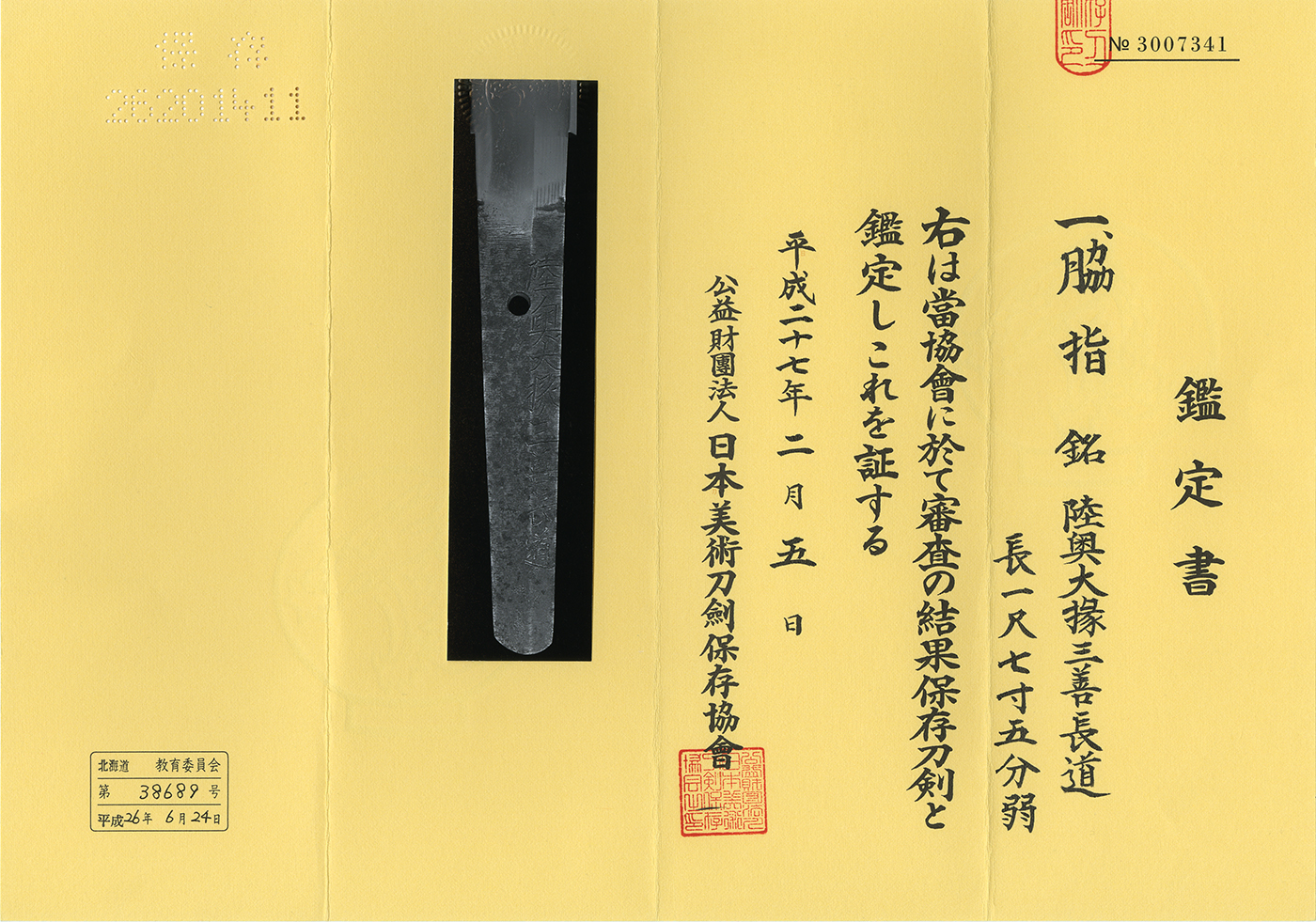Wakizashi : Mutsu Daijyo Miyoshi Nagamichi
2017/01/06
Wakizashi in Shirasaya with Koshirae(NBTHK Hozon Paper)
Signature : Mutsu Daijyo Miyoshi Nagamichi
Shinto: Saijyo Owazamono: Jyosaku: Iwashiro
(We divide 4 sections for each sword as Saijyo saku, Jyojyo saku
Jyo saku and regular saku)
This Mutsu Daijyo MIyoshi Nagamitsu belongs to Jyosaku ranking.
The blade was polished.
Blade length : 53.0 cm or 20.86 inches.
Sori : 0.6 cm or 0.23 inches.
Mekugi : 1
Width at the hamachi : 2.9cm or 1.14 inches.
Width at the Kissaki : 2.18cm or 0.85 inches.
Kasane : 0.7cm or 0.27 inches.
Era : Edo Kanbun period.
Shape : It is regular width and shallow Sori nice Kanbun Shinto shape wakizashi
Jitetsu : Itame hada well grained with JInie attached.
The Chikei work is undulating in the Ha.
Hamon : NIe Deki starting with Suguha from the Hamachi.
Gunome Midare gradually combined with coarse Nie attaching with mixture
of Sunagashi activities. Boshi is roundly curved Kotetsu like Boshi.
Special feature :
Miyoshi Nagamichi, born Miyoshi Toshiro lived at Matsuyama in Iyo province is a grond son
of Nagakuni. Nagakuni was a retained swordsmith of Kato Yoshiaki. Nagakuni
and his son Masanaga, the father of Nagamichi went along with the Kato family
when they moved to Aizu in O-shu province in 1627. Nagamichi was born in 1633
who was called Michinaga in his youth. Accepting Mutsu-Daijo in 1659, he changed the name to Nagamichi.
Mr. Asaemon Yamada, known as a famous cutting tester ranked Nagamitsu Saijo-Owaza-mono
in his book as one of twelve excellent swordsmiths at the point of sharpness.
Quite a few swords forged by Nagamichi survive with the result of cutting test.
Nagamichi the First passed away in 1685, aged 53. The workmanship of
this katana shows a strong resemblance to Kotetsu who is a representative swordsmith of Edo-shinto.
This work is distinctive Hamon of Kotetsu. It is very similar and the condition is good.
Koshirae :
Tsuba : Round shape iron Tsuba, aged man and landscape are engraved.
Fuchikashira : Shakudo Nanako, the chrysanthemum is engraved with gold color.
Saya : Black Roiro Saya.
Menuki : Shakudo, the chicken is egngraved.
NBTHK Hozon Paper
Aoi Art estimation paper : whole Oshigata.







